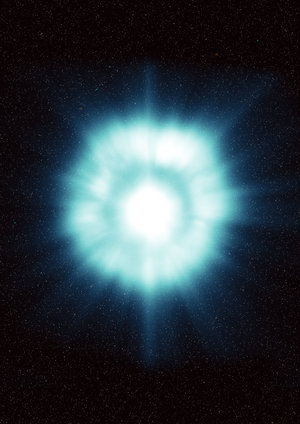Observations: Seeing in infrared wavelengths
The Universe in infrared wavelengths is only one step removed from the familiar, visible Universe. It is the cooler objects that emit most strongly in the infrared.
A diffuse glow of infrared radiation permeates our Milky Way galaxy. This is generated by dust grains, which are present everywhere and which absorb starlight and then radiate that energy at infrared wavelengths. Our Solar System also contains a population of dust particles, created by evaporating comets and colliding asteroids, that collectively radiates the zodiacal light and is brightest at infrared wavelengths.
At shorter infrared wavelengths, you can see cool stars and other celestial objects. The tiny red dwarf stars and conversely the enormous red giant stars, both have surface temperatures of a few thousand degrees and release a lot of infrared radiation. Newly forming stars, which are found at the centre of dense, dusty cocoons also shine brightly at infrared wavelengths.
Gaseous molecules are readily visible in the infrared. Many of these molecules contain carbon atoms and so are organic molecules, perhaps even the precursors of biological molecules. However, there are so many molecular species in space and so many different ways that they can vibrate and rotate that there is still confusion identifying which infrared features they create.
The infrared is an important wavelength range for studying the distant and therefore early Universe. This is because the Universe is in a state of constant expansion, which stretches every wavelength of light travelling through it (known as the ‘red shift’). Much of the visible and ultraviolet light released in the early Universe has now been stretched into the infrared region of the spectrum. Therefore, designing infrared telescopes such as the NASA/ESA James Webb Space Telescope (JWST) is essential, to study the distant young Universe.
Infrared radiation can not easily penetrate the Earth’s atmosphere, particularly because it contains many infrared-absorbing molecules. Satellites, such as ESA’s Infrared Space Observatory and Herschel, are therefore essential to fully study this region of the spectrum from outside the atmosphere.







